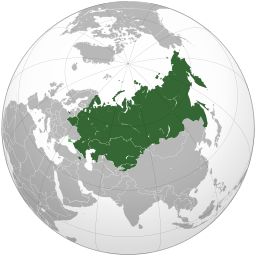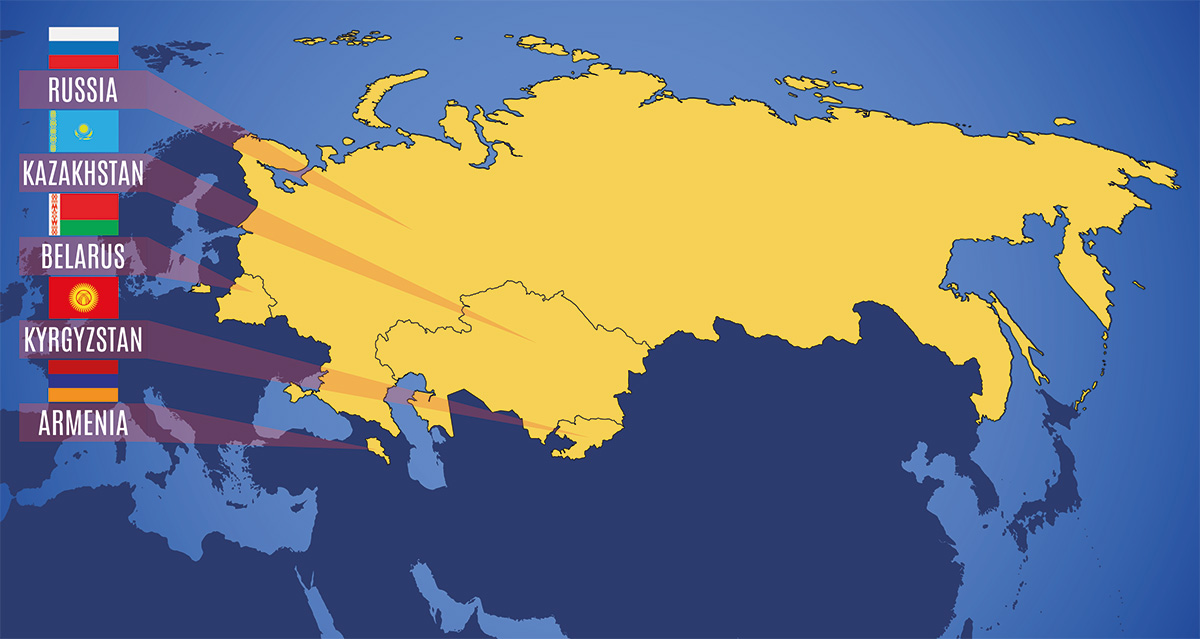[vc_row][vc_column width=”1/2″][vc_column_text]
Eurasian Economic Union
When the Roman Empire finally collapsed after four centuries, the teeming barbarians who'd done their best to cripple it, immediately set about trying to recreate the thing. A similar phenomenon occurred when the Soviet empire was dissolved in the 1990s. The Eurasian states which had experienced very close economic union under communism, suddenly found themselves free and independent - and responsible for their own affairs. It didn't take long for these countries to explore economic union with their former comrades. In 1995 Russia, Belarus and Kazakhstan came together to form a customs union – the first phase in the creation of the Eurasian Economic Union (EAEU). A year later this initial group was joined by another former Soviet republic, Kyrgyzstan, and all four committed themselves to further economic integration. Armenia was accepted into the bloc by the time the EAEU was formally established in 2015. The body of nations models itself on the EU in structural terms, and its aims include a single market with a single currency. The trading potential in the group, which has a total population of 190 million, is considerable. Russian premier, Vladimir Putin has expressed his desire that all the former Soviet republics will one day become members – with the exception of the Baltic states of Estonia, Lithuania and Latvia, who are all now members of the EU. The bloc faces many internal difficulties, however, the chief being Russia's interpretation of union. Many people in the newly independent states are cautious about closer union, being suspicious of Russia’s motives. Some believe Putin's dream is to re-establish a geo-political union to rival the major world powers, rather than a simple trading union of neighbours. At the same time, progress towards economic unity in the EAEU countries is being hampered by currency weaknesses, industrial decline, unemployment, growing nationalism and tensions on the region's borders. The strained situation in Ukraine remains an issue, and seemed at one stage likely to hamper the development of the EAEU.
What trade deals are there with other countries and economic unions?
EAEU - Egypt Free Trade Agreement (from 05/10/2015)
CIS Free Trade Zone Agreement (CISFTA) (from 19/03/2016)
EAEU - VietNam Free Trade Agreement (from 05/10/2016)
EAEU - Serbia Free Trade Agreement (from 01/10/2019)
EAEU - Iran free trade agreement (from 27/10/2019)
EAEU - Serbia free trade agreement (from 10/07/2021)
[/vc_column_text][/vc_column][vc_column width=”1/2″][vc_column_text]Member Countries
Country | Population (2018) | GDP Growth (2021, %) | Date Joined |
|---|---|---|---|
2,934,152 | 5.7000 | 01/01/2015 | |
9,452,113 | 2.5067 | 01/01/2015 | |
18,403,860 | 4.0000 | 01/01/2015 | |
6,132,932 | 3.6106 | 01/01/2015 | |
143,964,709 | 4.8198 | 01/01/2015 |
Lord Waverley: The EAEU is an Alternative to the EU — But Will It Last?
President Armen Sarkissian: Quantum Politics Defined, Explained, and Considered
Lord Waverley: Brexit and Trade – The UK Must Now Be Flexible, Opportunistic & Respectfully Machiavellian
Loading, Please Wait!
This may take a second or two.


















































































